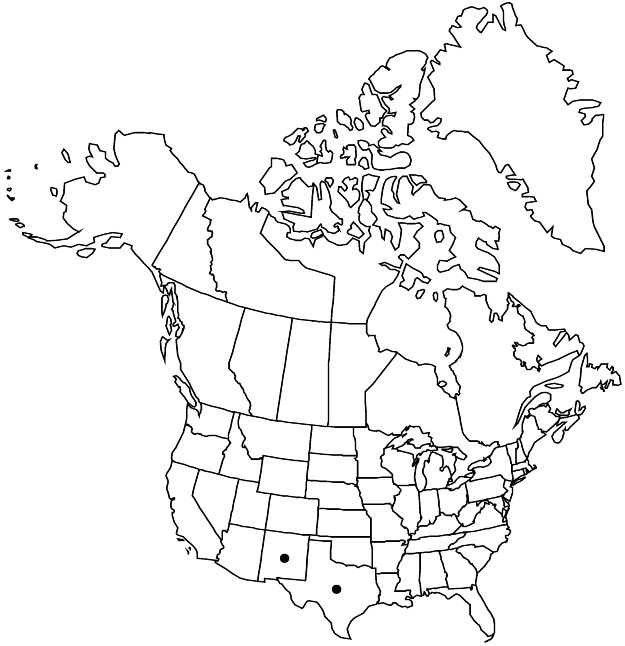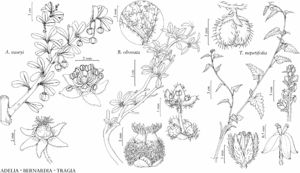Bernardia obovata
J. Arnold Arbor. 21: 261. 1940.
Shrubs to 0.8 m. Leaves: stipules caducous, green to straw colored, not thickened, without dark resinous exudate; petiole 0.5–3 (–4) mm; blade usually obovate to cuneate, rarely broadly elliptic to suborbiculate, 0.6–3 × 0.5–2.5 cm, margins flat, crenate-serrate, laminar glands 1 (–2), abaxial surface green, sparsely spreading stellate-pubescent, adaxial surface green, sparsely stellate-pubescent to glabrate; veins not prominent abaxially, ± level with surface. Inflorescences: staminate thyrses 5–10 mm. Staminate flowers: stamens 3–4 (–6), nectary glands claviform. Pistillate flowers: pistil 2-carpellate; styles 2, irregularly dissected adaxially. Capsules 5 mm, 2-lobed.
Phenology: Flowering spring; fruiting summer–fall.
Habitat: Canyon washes in high desert scrub.
Elevation: 800–1900 m.
Distribution

N.Mex., Tex., Mexico (Chihuahua), Mexico (Coahuila), Mexico (Sonora)
Discussion
Bernardia obovata is a Chihuahuan Desert endemic occurring in the flora area only from the trans-Pecos of west Texas to the San Andres Mountains of southern New Mexico (K. W. Allred 2002b). The bicarpellate pistil is apparently unique within Bernardia.
Selected References
None.
Lower Taxa
"connate" is not a number. "distinct" is not a number.
